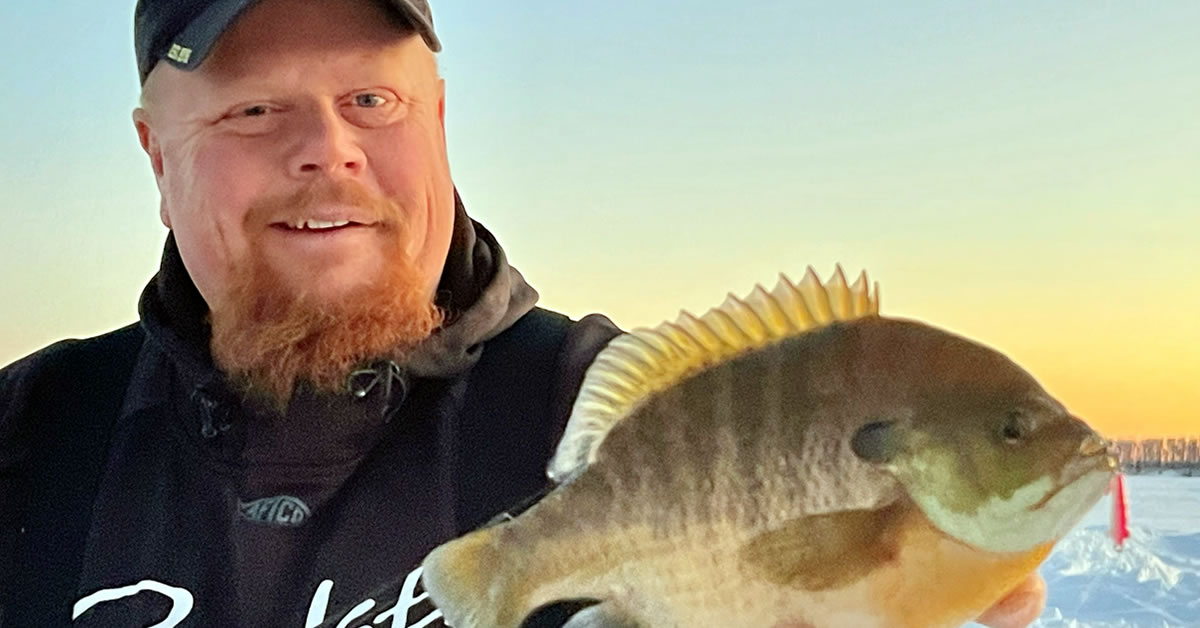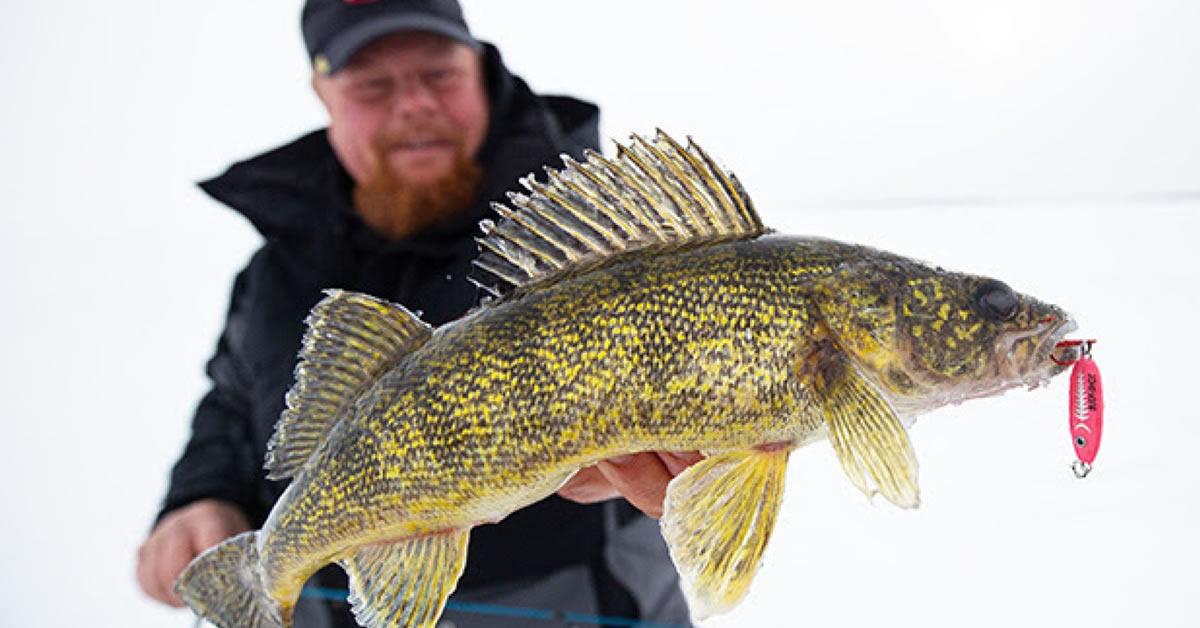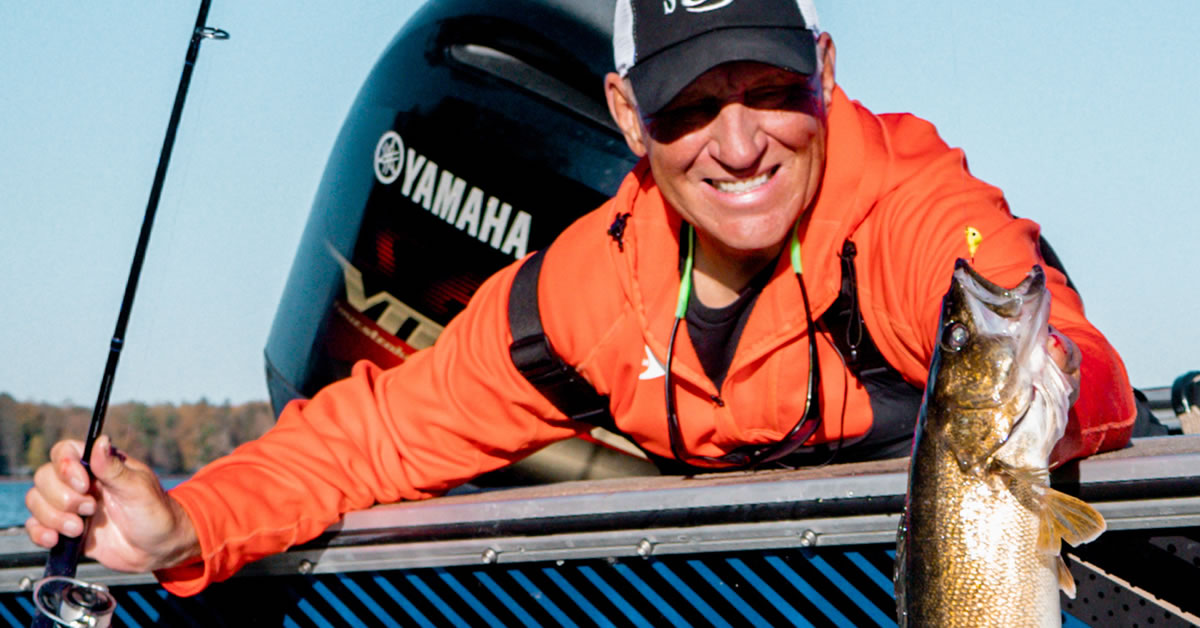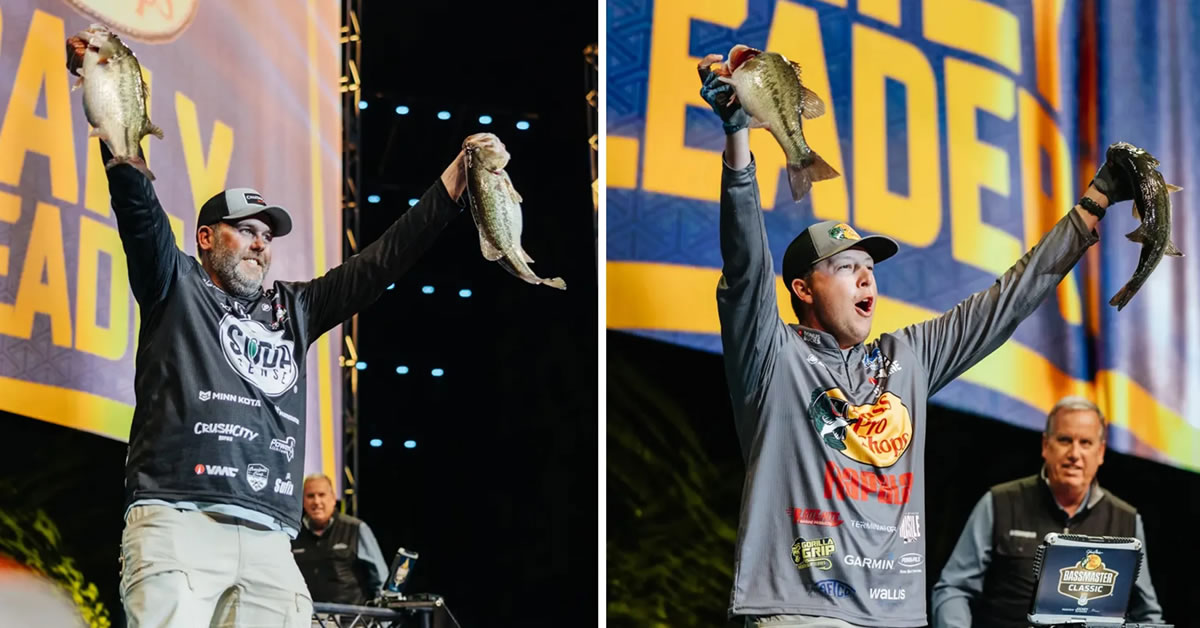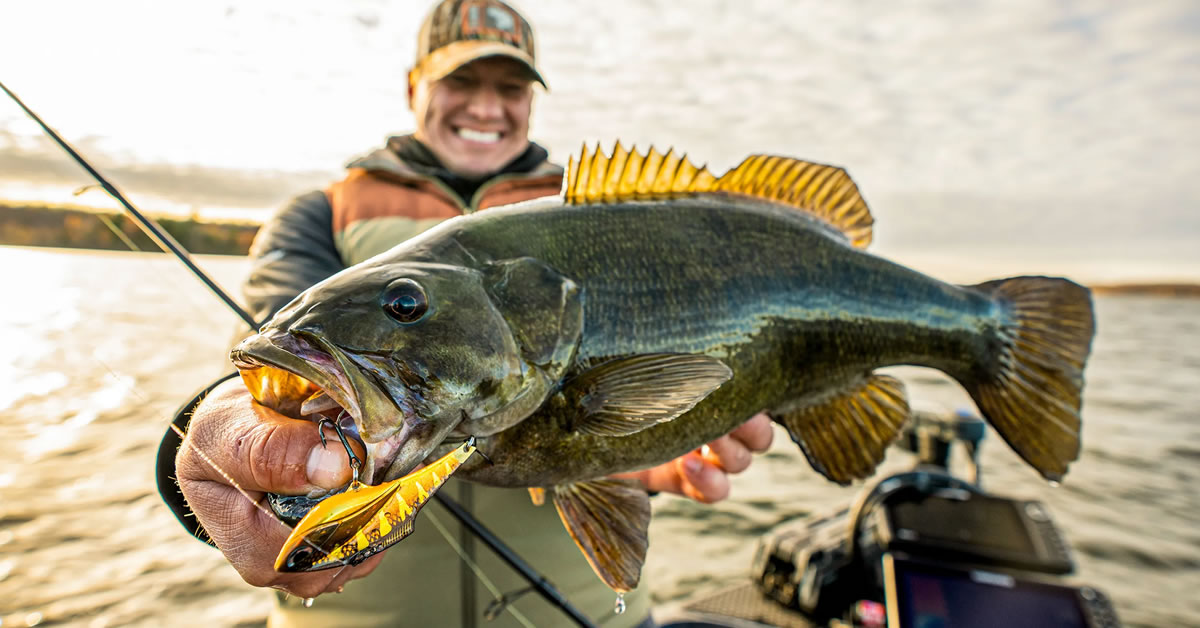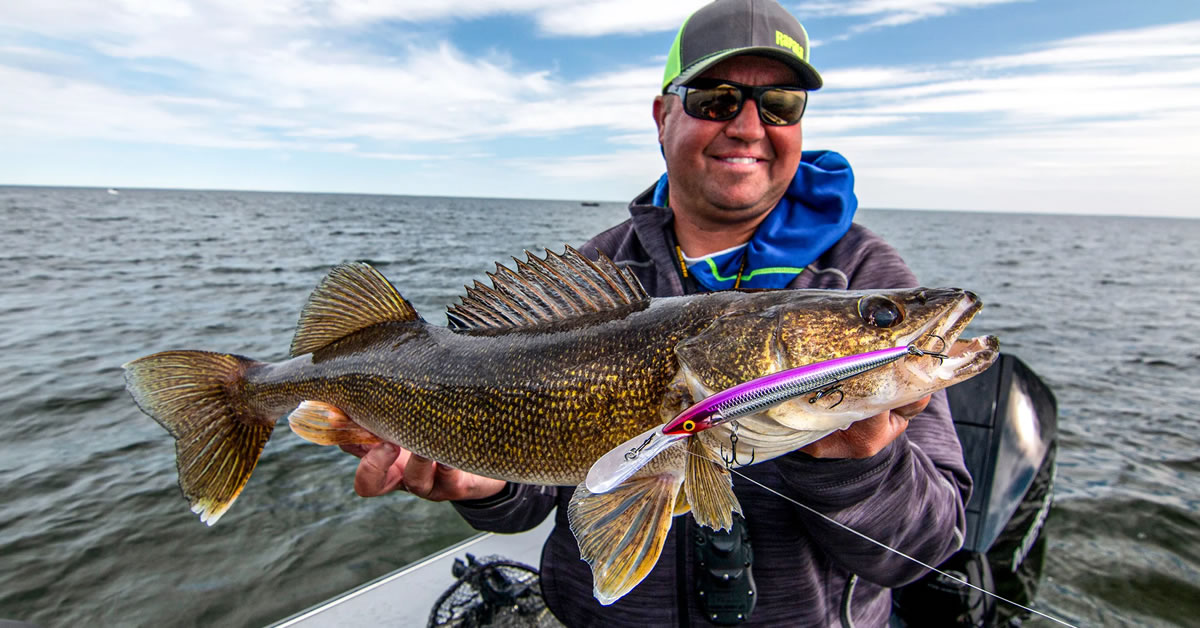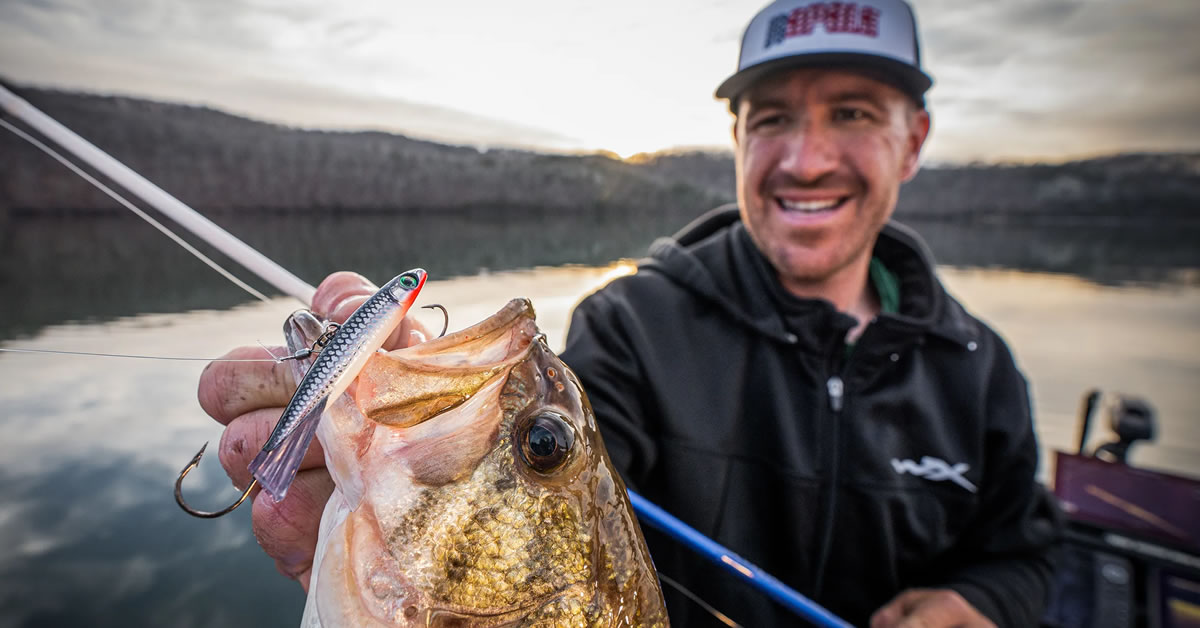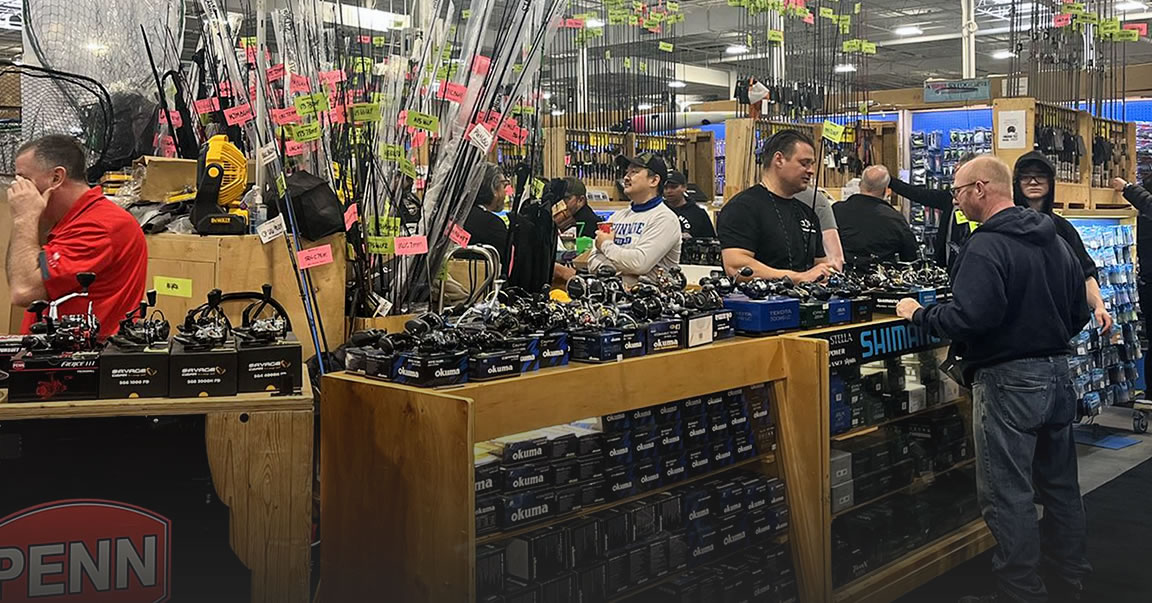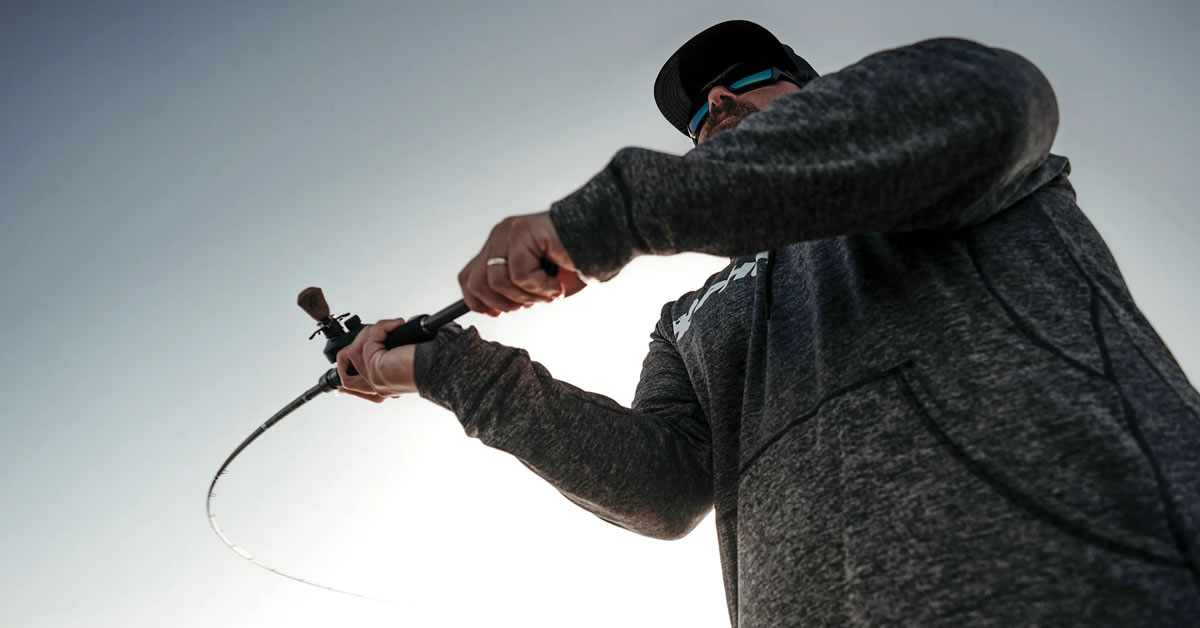Simple Pleasures in Bass Tactics
by Fishing The Wild SideWith Doug Newhoff
It's been said that necessity is the mother of invention. If this is true, then simplicity must be the father! Bass anglers are taking note.
Give a bucketmouth fanatic a baitfish-colored, noisy crankbait with holographic eyes and neutral buoyancy, and that angler will chuck and wind only for as long as the lure is producing.
Give the same angler a bobber, some split shot, hooks and jigs, and suddenly the possibilities are endless.
In a sport that's been turned upside-down and inside-out in the ongoing search for new baits, techniques and
|
"What I'm seeing today are a couple of things that are new, but a couple of things that aren't new, too," says Chip Leer, television host for the Minnesota Pro-Am Bass Tour and on of the renowned members of the prestigious Leech Lake Guide Coalition. "In my opinion, there is nothing new that is really revolutionizing the sport. There will be a lot written about the new stretchable plastics and a few things like that, but it's more about refinements to old techniques to make them more effective than they've been in the past."
Spence Petros, one of fishing's foremost educators, illustrates that point with a West Coast presentation he adapted to midwestern applications. Petros was in Reno, Nevado, conducting a seminar. Afterward, he fell into an intriguing conversation with a California man about catching big largemouth bass. During a break, the angler took Petros aside.
"He said what he caught a lot of his big bass on was a big tube," Petros recalls. "He said, ‘I don't show this to a lot of people, but it's something you might want to try,' and he gave me a couple of them. Since that time, I've been using them a lot on bass, as well as muskies, pike and lake trout."
When Petros talks about big tubes, he means big. His favorite for midwestern waters where bass seldom grow larger than 7 or 8 pounds is the 6-inch Lindy Tiger Tube, which also comes in an 8-inch size. The 6-inch tubes feature a 5/8-ounce jighead with a 6/0 hook in the body and a 2/0 treble trailer. The 8-inchers feature a 3/4-ounce jighead with a 6/0 hook and a 3/0 treble trailer hidden in the bait's tentacles.
It works for a couple of reasons. First of all, it's not uncommon for a big fish to eat something that large when it's on the prowl. Second, it's something different that most fish have never seen before.
Another feature Petros likes about big tubes is their versatility. He can jig it down a deep drop-off, rip it through schools of suspended baitfish, inch it along a weed edge or work it over the top of thick vegetation.
"The eye-tie comes out about a quarter-inch in front of the lure. If you push the eye back farther, you can get more side-to-side or walk-the-dog type action out of it," he notes. "You want to hold the rod parallel to the water and keep reeling. Reel and pop, reel and pop."
"Another thing I do is put Berkley Power Attractant or Jelly on the back end of the Tiger Tube to prevent the tentacles from wrapping. You can also take the hook out and put a rattle chamber on it like you would attach to a flipping jig for a little extra noise."
.jpg) Chip Leer, Fishing the WildSide co-founder, has fished for bass across North America in almost every way conceivable. If water clarity is good, at some point he always comes back to one of the most basic elements of the sport – worm fishing.
Chip Leer, Fishing the WildSide co-founder, has fished for bass across North America in almost every way conceivable. If water clarity is good, at some point he always comes back to one of the most basic elements of the sport – worm fishing.
"There's been so many refinements occurring with plastic bodies and shapes, and they have their time and place, but I'm still big on smaller and simpler stuff like split-shot rigs and ‘do-nothing' worms that don't have much action to them. I like to use a 6-inch Berkley Power Bait floating worm with a split shot from one to two feet in front of the bait, depending on the depth and cover I'm fishing. The floating worm can be worked across the top of really thick cover or right through heavy, deeper weeds."
Leer likes to twitch his rod tip to make the worm dance for a couple of feet, reel up the slack, then pause to let it float up. It's often more than the bass can resist.
"What I like about this presentation is that even when a straight worm isn't doing anything, the Berkley Power Bait floating worm is moving and floating around while you are pausing your retrieve" he said. "It's not an earth-shattering technique, just a refinement."
There is one more refinement of an existing technique Leer is anxious to put to the test. Anglers have tried to give their tubes or other soft plastics additional life by inserting pieces of Alka Seltzer or similar dissolving effervescent products.
Berkley has taken that concept to the max with its Bubble Up Tournament Strength Power Baits, which are built with a pre-formed pocket that holds a Bubble Up Pellet. Not only does the Bubble Up Bait disperse scent and sound in the water, it actually rises as the bubbles are trapped momentarily inside the cavity, then falls as they are released.
"The idea is to be able to lay it in front of a stubborn fish's nose and let it lift and drop on its own without having to go horizontal with it. One of the biggest challenges bass anglers face, in my mind, is how to keep a bait within the fish's strike zone without having to get right vertically on top of the fish."
Graden Hansen Minnesota Pro Am Bass Tour Championship qualifier and professional tournament bass angler from Iowa who loves to fish jigs.
Lately, he's been catching post-spawn fish that others have left behind by working his jigs much like he would crankbaits or spinnerbaits.
"I'm swimming my jigs more than I ever used to," he notes. "Clean, clear water is definitely a key because you don't have the blades of a spinnerbait or the rattle of a crank to get the fish's attention. For the most part, they have to be able to see it. It's a pretty subtle technique. It works well on pressured fish that have had crankbaits or spinnerbaits buzzed over their heads all weekend."
Hansen uses the same basic jigs he employs for flipping and pitching, only in smaller sizes such as 3/16th- or 1/4th-ounce. The heads are pointed with a vertical line tie to better fight through vegetation. The bodies are typically grub-style with a broad, vibrating tail like Berkley's Power Grubs. His retrieve depends on the situation at hand. "If you're fishing smallmouth in some vegetation, you can reel it pretty fast – almost like a spinnerbait over the top of the grass," he explains. "If the fish are a little more subdued or buried in the grass, I reel it almost like a crankbait and try to tick the tops of the grass a little bit. If it hangs up, you rip it free, and you can trigger some strikes that way."
Equipment is a key consideration for swimming jigs in and around cover.
.jpg) "I've gone to Berkley's Gorilla Tough braided line," Hansen says. "You need something strong enough and heavy enough to get you through that vegetation because a lot of times the fish will pull you down into the weeds. Mono can wrap around the weeds and the fish will break off. Gorilla Braid just cuts right through the weeds. I like the 7-foot Fenwick HMG AV model GAVT70MF rod because it has a soft tip that lets the fish inhale the bait and allows you to load up and throw a small jig quite a distance, yet it still has the backbone to wrench them out of that thick stuff."
"I've gone to Berkley's Gorilla Tough braided line," Hansen says. "You need something strong enough and heavy enough to get you through that vegetation because a lot of times the fish will pull you down into the weeds. Mono can wrap around the weeds and the fish will break off. Gorilla Braid just cuts right through the weeds. I like the 7-foot Fenwick HMG AV model GAVT70MF rod because it has a soft tip that lets the fish inhale the bait and allows you to load up and throw a small jig quite a distance, yet it still has the backbone to wrench them out of that thick stuff."
Hansen has experienced the fruits of swimming jigs first-hand as a tournament angler. "There's nothing scientific about it," he notes. "But it's highly effective and has helped me to qualify for numerous championships."
.jpg) Tommy Skarlis, is a successful walleye angler on the PWT and RCL tournament trails, but he grew up fishing more for panfish and bass. And it was his panfishing expeditions that tipped him off to what has become a favorite method for taming brawny bass.
Tommy Skarlis, is a successful walleye angler on the PWT and RCL tournament trails, but he grew up fishing more for panfish and bass. And it was his panfishing expeditions that tipped him off to what has become a favorite method for taming brawny bass.
"There were so many times when I'd be panfishing with floats and really small panfish jigs," he recalls. "I would run into quite a number of both largemouth and smallmouth bass that were evidently trying to defend the panfish because they'd grab my lure and wrap me around docks and trees and break me off. I decided to get revenge."
Skarlis began fishing Berkley Power Baits beneath Thill spring-locking floats. "I've had success with it from spring all the way through fall," he explains. "The beauty of this system is that it allows the bait to suspend. Every time you pull the float across the water the bait rises in the water column. When you pause the float, the bait swings slowly back down on a pendulum motion that drives bass crazy."
In shallow water, Skarlis uses little or no weight. In deeper water, he will insert a nail head or add a small split shot to help the bait work the water column. "Another thing I like about this method is that you can make your stuff weedless by using a Lindy No-Snagg hook or by imbedding the hook into the middle section of the Power Bait. Another good application is Lindy's E-Z Tubes with the rattles." Skarlis notes "The E-Z Tube allows you to do things with a tube that you normally can't do. The tube creates a great profile in dark water, and the rattle chamber helps attract bass to the bait. Under a fixed float, you can make that bait sit there and wiggle, jiggle and rattle while you fish it almost vertically from a distance."
Taking the vertical thought a step farther, Skarlis sometimes turns to a slip float.
"When you jig the lure, the float won't move but the line, and invariably, the lure moves up and down," he explains. "It's a great way to deal with bass on steep edges or in small pockets or cups of dense vegetation without getting the boat right on top of them and spooking them."
Finally, Skarlis adds, float fishing is an ideal way to introduce new anglers to the sport.
"It's great for anyone who isn't polished or comfortable with heavy gear or precision casting to small areas," he explains. "With the visual element the float provides, there's no mistaking a strike, either."
Take it from four accomplished and avid anglers. Sometimes, to get where you are going in bass fishing, it pays to remember where you've been.


.jpg)

